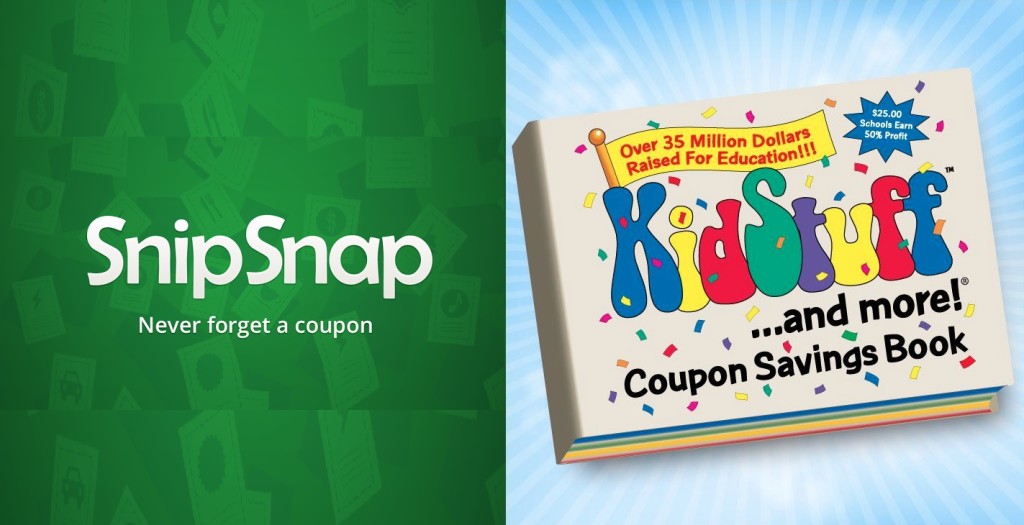The controversial SnipSnap coupon app lives on, after agreeing to settle a lawsuit that challenged its business model and could have threatened its very survival.
SnipSnap and the publishers of KidStuff coupon books have agreed to a consent order that prohibits SnipSnap from allowing any KidStuff coupons to be uploaded to, or shared on, the app. The agreement brings to a conclusion a lawsuit that KidStuff filed back in October 2013, alleging that SnipSnap was allowing users to “illegally access, copy and redeem” KidStuff’s copyrighted coupons.
“We’re pleased with the outcome,” KidStuff vice president Seymour Traub told Coupons in the News. “We fulfilled what we wanted to accomplish.”
But the lack of a ruling, and a written judicial opinion, leaves unresolved a number of legal questions surrounding the SnipSnap business model that KidStuff had so forcefully challenged.
SnipSnap came onto the scene in 2011 with a simple promise – “never forget a coupon”. Billing itself as “the first app to scan, save, and redeem printed coupons on your mobile phone,” SnipSnap invites users to store their coupons on the app by photographing them. SnipSnap then scans the photograph, identifies the bar code and creates a new, mobile-optimized bar code that retailers can scan in the stores. The app is meant to be used only with store-issued coupons and not manufacturer’s coupons, though SnipSnap has said it’s working on that capability.
In addition, uploaded coupons can be shared with others. So not only do users have access to their own coupons, but any SnipSnap user can gain access to a coupon originally photographed by another.
SnipSnap considered its idea kind of revolutionary. Many coupon issuers thought differently.
“Many of the available coupons on the SnipSnap app, including KidStuff’s coupons, contain written notices prohibiting reproduction and redistribution of the coupons,” KidStuff asserted in its lawsuit. That not only voided the coupons, KidStuff argued, but amounted to an infringement of copyrighted material. “In effect, it is a business model that depends on infringement,” KidStuff said of SnipSnap.
SnipSnap argued that all a coupon issuer had to do was request that their coupons be removed from the app, and it would comply. And many retailers took SnipSnap up on its offer. As retailers like Target, Kroger, Publix, ShopRite, Wegmans, Stop & Shop, Victoria’s Secret and others became aware of the app, they instructed cashiers not to accept coupons presented via SnipSnap, and some demanded that SnipSnap prevent their coupons from appearing on the app at all.
That’s precisely what KidStuff did. The family-owned business publishes annual coupon books containing offers for local retailers and restaurants, that are sold by schools as fundraisers. When its business partners began questioning why their coupons were showing up on SnipSnap, KidStuff asked SnipSnap to remove them.
And after its coupons continued to appear on the app, KidStuff sued.
The consent order now requires SnipSnap to employ filters that will “promptly and as quickly as possible prevent such KidStuff coupons from being shared on the SnipSnap app.” Each year, SnipSnap will be able to purchase a new set of KidStuff coupon books in order to update its filters.
The two parties also reached a settlement agreement, the terms of which are confidential. But if SnipSnap is found to be in violation of the consent order or settlement agreement, “we have the right to move the court to impose that consent order and enforce monetary and other sanctions,” KidStuff attorney Henry Kuller told Coupons in the News.
SnipSnap representatives did not respond to several requests for comment.
If the case had proceeded to trial, the judge could have made some potentially precedent-setting decisions regarding SnipSnap’s business model that KidStuff argued was “built upon infringement.” SnipSnap argued that it relies on user-generated content and is neither able to, nor required to, police that content for infringing material. The burden, courts have found, is on the copyright holders themselves to notify such companies of any infringing material, and only then must the companies act.
But there are exceptions.
The U.S. Supreme Court itself has held that there is a difference between a company that is merely capable of hosting infringing material, and one that encourages it. “One who distributes a device with the object of promoting its use to infringe copyright… is liable for the resulting acts of infringement by third parties,” the Court found in a unanimous 2005 decision. By encouraging users to photograph their coupons and reproduce them, in violation of the coupon’s terms, KidStuff argued, SnipSnap was by definition promoting the app’s use to infringe copyrights.
Plus, there’s the matter of contributory infringement. That’s the difference between passively hosting infringing user-generated content, and actively participating in the infringement. By transforming a photograph of a coupon into a new, mobile-optimized bar code, KidStuff argued that SnipSnap was both aware of, and complicit in, violating coupon issuers’ copyrights. SnipSnap countered that creating the bar codes is an automated process and does not constitute participation in any infringement.
Major copyright cases like the above-mentioned, precedent-setting U.S. Supreme Court case have had dozens of co-plaintiffs. In this case, KidStuff stood alone. Other retailers and coupon issuers decided to issue takedown notices to SnipSnap and/or simply refuse SnipSnap coupons, but none joined forces with KidStuff to take on SnipSnap in court.
So the outcome of the case was narrow in its scope. That denied KidStuff the opportunity to represent the entire coupon industry and potentially smack down SnipSnap with a court ruling that blew up its business model, but Traub said he’s okay with the result. “Our major objective was to protect our product and our coupon participants. They do not expect from us to allow unlimited distribution of their coupons, or to have them appear in mobile form.”
KidStuff will continue to monitor SnipSnap to ensure its coupons are not appearing on the app in violation of the agreement, but “their filters appear to be working,” Traub said. So even if all of the legal questions were not settled, KidStuff’s original objective in preventing its coupons from appearing on SnipSnap, was fulfilled.
With the lawsuit now behind it, SnipSnap is expanding and, apparently, thriving. It continues to generate laudatory writeups in technology and mainstream consumer publications, none of which has ever mentioned – or even appeared to be aware of – the lawsuit or coupon issuers’ concerns about the app.
SnipSnap also boasts more than 4 million users now, and has dozens of “verified partners” that pay for the privilege of having their coupons on the app – and having some control over which of their coupons are made available and how they are distributed. Most of those verified partners are retailers that are not particularly concerned about making their coupons widely available, such as Bed Bath & Beyond, with its ubiquitous 20% off coupons. Manufacturer’s coupons are still not supported on the app, and relatively few grocery or mass merchant store coupons appear on the app anymore, since most stores won’t accept them anyway.
It’s kind of like what SnipSnap might have been, had it approached potential partners first, instead of opening the floodgates and allowing users to upload and share any and all types of coupons with abandon – and then winnowing down the field to a selection of “verified coupons” from official partners, by responding to takedown notices and defending itself against a lawsuit.
But when it comes to launching a startup and dragging coupon issuers into the digital age using questionable methods – apparently it’s easier to ask forgiveness than it is to get permission. Even if it takes a consent order to do it.














